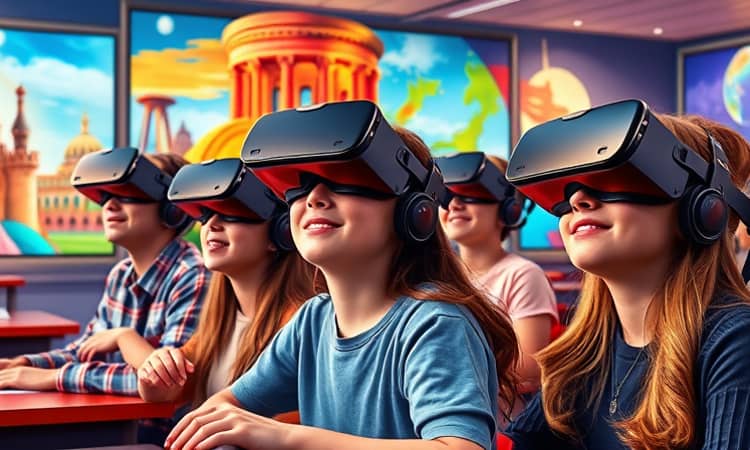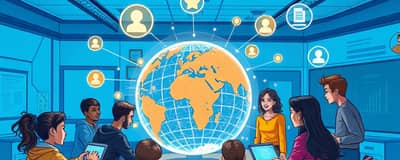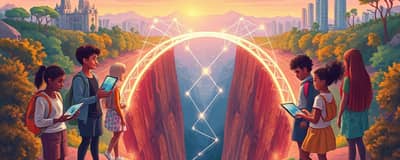In an era where technology continually reshapes our lives, virtual reality (VR) stands out as a potential revolution in education. By transporting students beyond the confines of textbooks and four walls, VR offers an unprecedented gateway to deep, experiential learning. From exploring ancient civilizations to conducting chemistry experiments in a risk-free environment, this technology promises to elevate engagement, boost retention, and foster skills essential for the 21st century.
The Immersive Power of Virtual Reality
At its core, VR creates immersive learning environments that captivate students’ attention in ways traditional lectures cannot. By enveloping learners in multi-sensory simulations, VR stimulates curiosity and anchors abstract concepts in memorable experiences. Imagine a biology class where students shrink to cellular size, navigating the bloodstream, or a literature lesson where they walk the streets of Shakespearean London—each scenario transforms passive study into active exploration.
Research underscores VR’s impact: learners experience increased knowledge retention by up to 75% compared to conventional methods. When students feel part of the narrative, their brains form stronger neural connections, leading to deeper understanding and longer-lasting memory. Such immersive experiences also encourage risk-taking and experimentation, critical components of inquiry-driven education.
Key Benefits Driving VR Adoption
- 4x faster than traditional learning methods—VR lessons can accelerate concept mastery by offering immediate, hands-on practice.
- Enhanced motivation and focus—students report higher excitement and less distraction when lessons unfold in a 360° environment.
- Inclusive learning—VR can be customized for diverse needs, providing personalized and adaptive learning experiences for students with disabilities.
- Development of social skills—collaborative VR scenarios build empathy, communication, and teamwork.
Practical Applications in Today’s Classrooms
Schools worldwide are integrating VR across grade levels and subjects. By leveraging affordable headsets like Google Cardboard and platforms such as ClassVR or Nearpod, educators can bring these use cases to life:
- Virtual Field Trips: Students explore the Great Barrier Reef or walk the ruins of Machu Picchu, gaining cultural and environmental insights that might otherwise remain distant.
- Science Simulations: Complex lab experiments—from dissecting a frog to observing chemical reactions—become safe, repeatable VR modules.
- Historical Reenactments: Learners witness pivotal moments, such as the signing of landmark treaties or the unfolding of scientific discoveries, fostering emotionally connected to the content comprehension.
- Special Education: Customizable sensory rooms and life-skills scenarios support learners with cognitive, physical, or social challenges.
Overcoming Challenges and Ensuring Equity
Despite its promise, VR integration presents hurdles. Equity of access remains a pressing concern in districts with limited budgets or inadequate infrastructure. To bridge this gap, communities can explore:
- Shared VR labs—rotating resources among classrooms to maximize usage.
- Grants and partnerships—with tech companies or nonprofits to subsidize hardware costs.
- Low-cost alternatives—smartphone-compatible headsets and free educational apps.
Additionally, educators require comprehensive training. Without proper support, even the most advanced VR tools may sit idle. Professional development initiatives should focus on both technical operation and pedagogical integration, empowering teachers to craft lessons that balance immersion with learning objectives.
Health considerations must also guide implementation: structured VR sessions, regular breaks, and clear usage guidelines help mitigate concerns such as eye strain or motion sickness. By establishing best practices, schools can harness VR’s advantages responsibly and sustainably.
Implementing VR Successfully: Strategies for Educators
To translate VR’s potential into classroom success, schools should adopt a phased, research-driven approach:
- Start Small: Pilot with a single subject or grade level to gather feedback and refine workflows.
- Align with Standards: Map VR experiences to curriculum goals, ensuring they reinforce required competencies.
- Measure Impact: Use both quantitative metrics (test scores, retention rates) and qualitative feedback (student surveys, teacher reflections) to assess effectiveness.
- Iterate and Expand: Scale successful pilots, integrating lessons learned and expanding to cross-disciplinary projects.
Collaboration among administrators, IT staff, and instructional designers is essential. By pooling expertise, schools can develop robust implementation plans, curate high-quality VR content, and establish protocols that prioritize student safety and learning gains.
Looking Ahead: The Future of VR in Education
As the global VR in education market surges—from $17.18 billion in 2024 to a projected $65.55 billion by 2032—innovations will drive wider accessibility and richer content libraries. Artificial intelligence integration promises adaptive VR experiences that respond in real time to individual learner progress, further enhancing personalization.
Emerging trends such as mixed reality (MR) and haptic feedback will deepen immersion, enabling students to not only see but also feel virtual objects. These advances will extend VR’s reach beyond the science lab and history class into art, language learning, and vocational training, preparing students for an increasingly digital world.
Conclusion
Virtual reality is more than a technological novelty—it is a powerful tool for reimagining how students learn, explore, and connect. By creating experiential and active learning opportunities, VR fosters deeper understanding, higher motivation, and greater inclusivity. Though challenges in access, training, and content development remain, thoughtful planning and collaboration can overcome these barriers.
Embracing VR today means equipping tomorrow’s learners with the skills, empathy, and curiosity they need to navigate complex global challenges. As educators, administrators, and policymakers unite to harness VR’s potential, we stand on the brink of an educational transformation that could inspire generations to come.
References
- https://soeonline.american.edu/blog/benefits-of-virtual-reality-in-education/
- https://online.lsu.edu/newsroom/articles/how-virtual-reality-changing-education/
- https://pmc.ncbi.nlm.nih.gov/articles/PMC11040080/
- https://www.hp.com/hk-en/shop/tech-takes/post/virtual-reality-in-education
- https://www.classvr.com/blog/advantages-of-virtual-reality-in-education/
- https://www.matsh.co/en/statistics-on-ai-vr-adoption-in-education/
- https://www.classvr.com/benefits-of-virtual-reality-in-education/
- https://www.teachaway.com/recruitment/blog/pros-and-cons-virtual-reality-k12-classrooms














